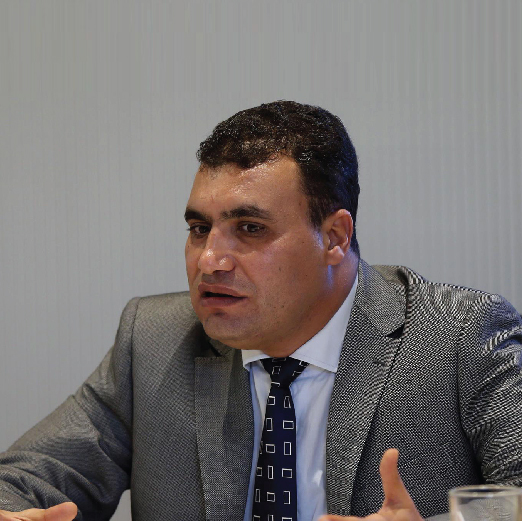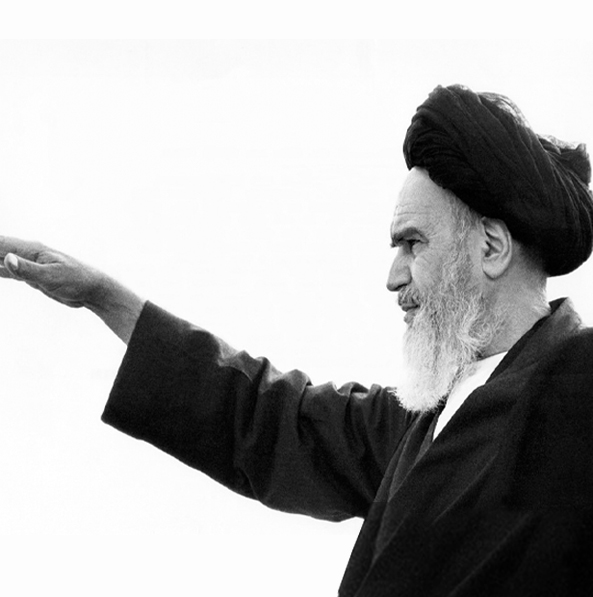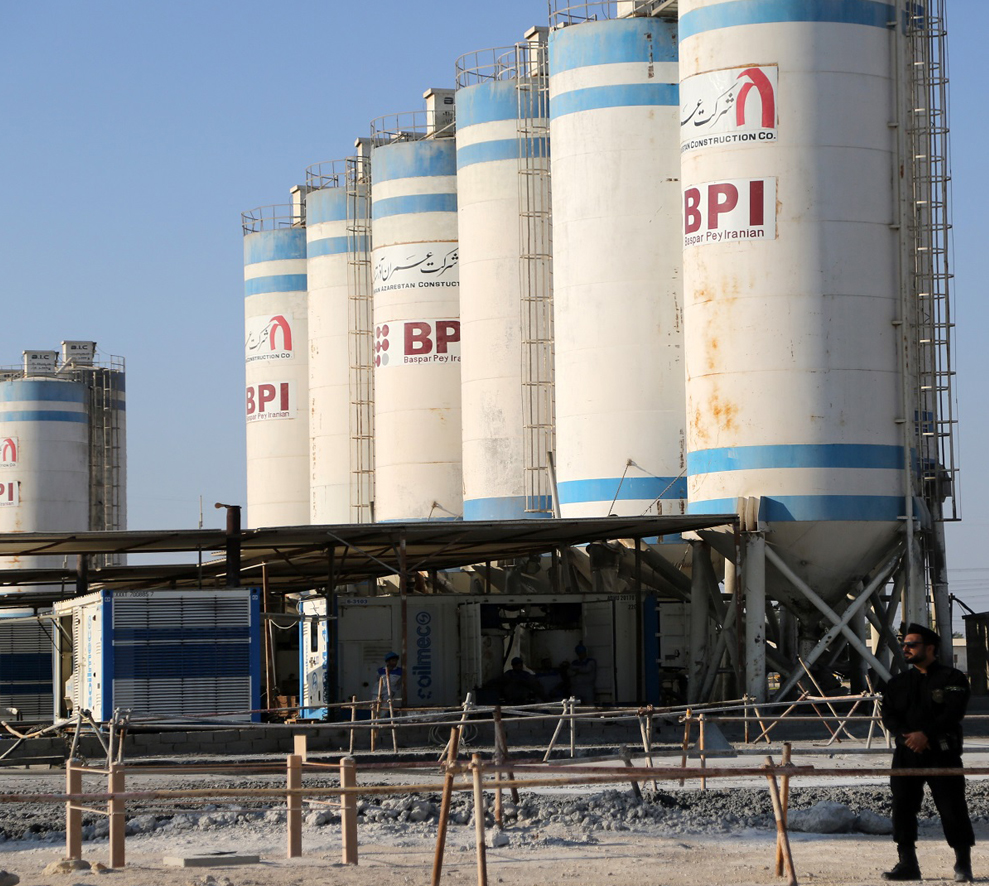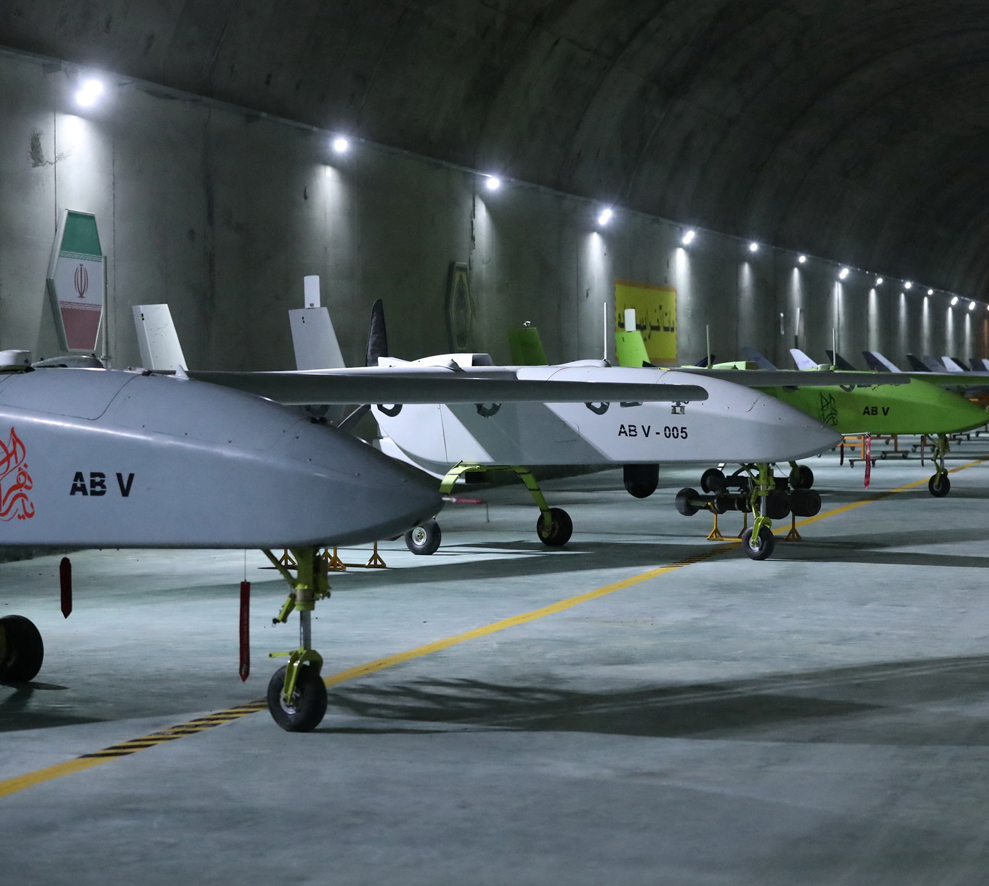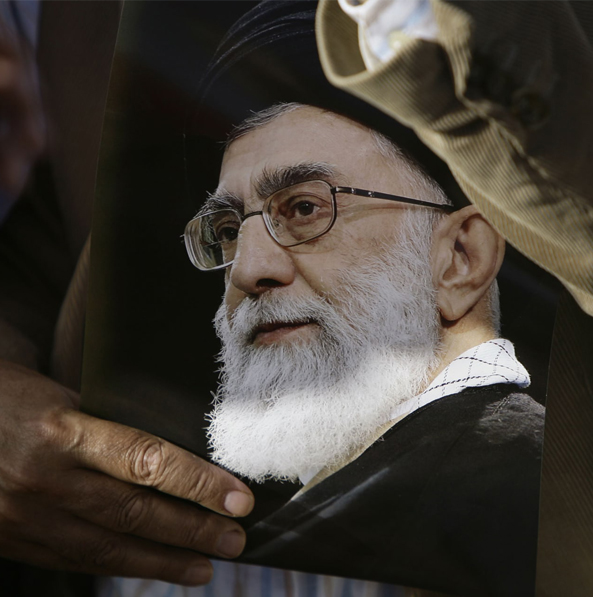The concept of Political Shiism may be an equivalent of political Shiah or a little broader; the latter is the realistic and practical embodiment of the former, with its representations in the blocs, entities and forces loyal to the regime of the Iranian “Islamic Revolution”. It is also directed by this regime’s orientations in its countries, states, and homelands and favors its sectarian affiliation to it over its affiliation to these countries and states.
On the other hand, political Shiism seems - from our point of view - to be the reference and the intellectual ideology that calls for being connected and loyal to the regime of “Al-Wali Al-Faqih”, its directions, arms and positions.
Political Shiism and political Shiah expand to contain a spectrum wider than Imamiyyah (Twelver) Shi’ism. The government of Al- Wali Al-Faqih supports -in all means- the most extremist groups in theory and practice within the Shi’ite school, such as groups from the Houthis, Nizari, Druze and others. Moreover, it penetrates the Sunni school in some of its extremist groups, such as Hamas and the Islamic Jihad Movement in Palestine, all the way to reach Al-Qaeda and others. Its circle may widen or narrow through the convergence of interests and purposes, and matching perceptions of loyalty and hostility.
This is done through multiple, different, material, cultural and political strategies for support and containment. We will try to provide details about some of them in this paper.
The features of the political Shiism Phenomenon
There is no definitive term for political Shiism, perhaps because of its modernity and its connection to the modern state framework as a space for its operation, ignoring the space of the nation, despite the fact that it crosses the former by prioritizing its sectarian association over association to the homeland, the national state, and the partnership between them.
First of all, we may have to realize the distinction of the contemporary political Shiism from traditional and historical Shiism, the armed struggle for the Imamate before the Major Occultation (which began in 329 AH) and after it, and the dogmatic and verbal sayings that have been established since the third century AH, where the sectarian controversy and presence were dogmatic nation-wide. Political Shiism is active within the homelands and national states by using a political discourse and a struggle and exercise of power in them.
Contemporary political Shiism is also distinguished from historical one, by its doctrinal link to the regime of Al-Wali Al-Faqih and the Iranian state, which has been established on this regime since 1979, and by his reference and obedience in a clash and transgression with the interests of the homeland and the citizens, as well as its distinction from the traditional Fiqh of this school since the Major Occultation.
Based on the foregoing, the practices of contemporary political Shiism’s discourse differ from the practices of the old, as they are not limited to employing the historical Mahdiyah and akidah Imamah, which is suitable for religious Shiites, and is common to the various Shiite sects; however, they mainly focus on contemporary statements and propaganda for mobilization and recruitment, such as political gains, rivalry, quotas, employing grievance and marginalization, accusing others of committing treason against their country and politics at the internal level, and opposing and rejecting the West and its allies at the external level.
From the above, it can be said that political Shiism - in its contemporary concept, refers to two main determinants:
- Groups that believe in affiliation, loyalty and subordination to the regime of the Iranian Islamic Revolution, its ideology and directions. They are active among Shiite minorities in particular, as they are active in other groups that are attracted to and believe in Khomeini’s revolutionary statements and goals, and they agree with his perceptions about friends and enemies.
- The state of the Shiite sectarian presence in politics and power struggles, as it turns into an end and a means at the same time, and its external loyalties take precedence over its internal affiliations, which prepares societies for violent practices and clashes based on sub-identities, and raises the suspicion of many of the nation's partners throughout the Arab and Islamic world.
The above-mentioned facts are summarized by the warning of the late Imam Muhammad Mahdi Shams al-Din (one of the figures of Shiite Islamic ideology, and former head of the Supreme Islamic Shiite Council in Lebanon) against the effects of political Shiism, by saying:
"In recent decades, a phenomenon has appeared within the circle of the Arab Shiites in particular, and the circle of the Shiites in general, which is establishing political party blocs for the purpose of claiming the rights of Shiites in particular, or presenting the real character of Shiites, or defending their rights."
Then tackled the result of this political Shiism or political Shiah by saying: “These formations, according to our observation of what they have become, did not lead to any significant result, but rather led to many crises, and deepened fear, caution, mistrust in the hearts of the rest of the Muslims in societies as a result of what Shiites were doing, and sought to isolate them from public life and from interacting with the system of public interests in a way or in another.. It has been proven by experience that contemporary Shiite gatherings, such as the "Dawa Party" and others, could not achieve an Islamic dimension for themselves within other sects and religious schools, but rather achieved -in the best cases- a fragile coexistence that is tinged with doubt and caution” [1].
As a result of this political sectarian extremism, armed groups in the region have emerged and spread fear all around the world due to their terrorist operations since the 1980s. Many wars and clashes were launched over the past decades, even within one country, as in many countries in the region that suffer from prevalence of weapons outside the authority of the state by non-State armed groups that are active in exceeding the roles and responsibilities of governments.
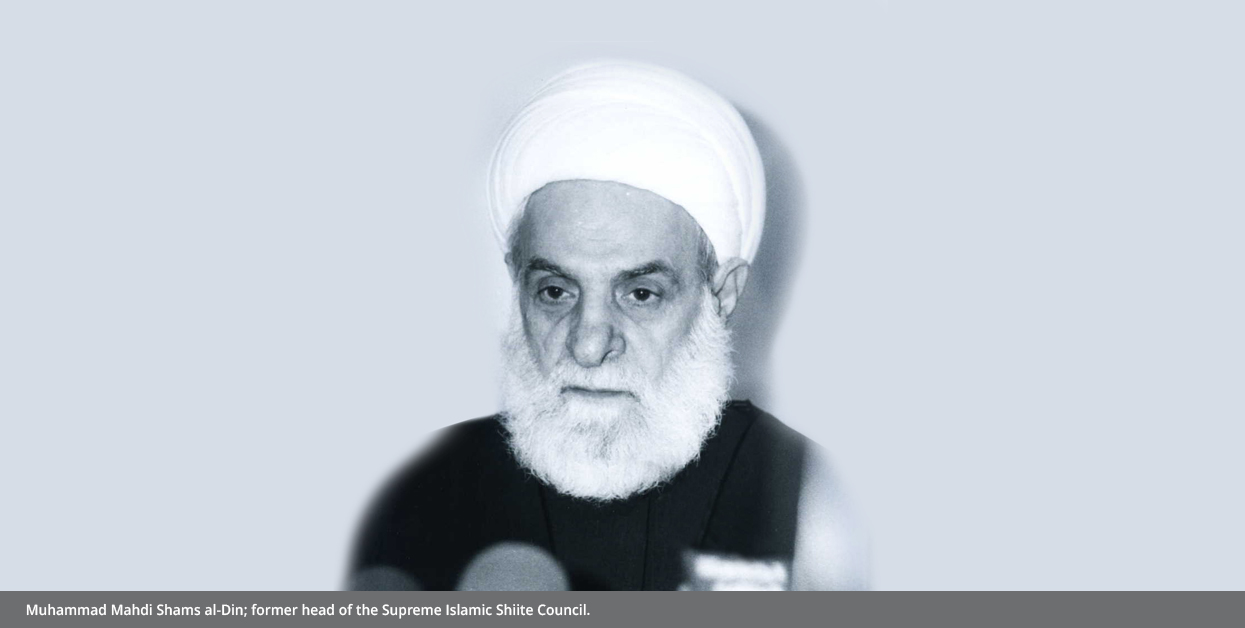
These groups assassinate their opponents, people imposing threats, and those who disagree with them. This also occurs at the regional level in interfering in the affairs of other countries, and entering into military clashes such as the Iran-Iraq war in 1980, as well as supporting terrorist operations within countries that are at odds and war with the Iranian "Islamic Revolution" regime.
Therefore, Imam Muhammad Mahdi Shams al-Din warned in his commandments against political shiism by saying:
"I recommend my Imamiyyah Shiite sons and brothers wherever they live; in every society of theirs, to integrate in their countries and communities, not to distinguish themselves in any special way, and not to invent a special project that distinguishes them from others, because the main principle in Islam, the principle approved by Ahl al-Bayt -peace be upon them-, is the unity of the nation, which goes hand and hand with the unity of interest. The unity of the nation requires integration; not differentiation. I advise them not to be drawn into and not to rush behind every call aiming at distinguishing them under any title, such as achieving justice, advocating for them, or convincing them that they are a minority with rights other than those enjoyed by other minorities"[2].
Thus, the Iranian regime pushed the Shiites towards a purely religious and violent presence in the field of politics and power, although the presence of Shiites before 1979 was political and national in the history of their countries and states through their historical participation in independence movements, nationalist and left-wing movements and parties, and sometimes even Christian ones in Lebanon throughout the twentieth century [3].
Then the Iranian strategy in political Shiism succeeded in disabling and putting an end to this integration, distinguishing the Shiite sectarian, marginalizing the rational and national elites, and the references opposing Al-Wali Al-Faqih, and enabling the voices and entities that are loyal only to him starting from Iran to the outside, within the Shiite school and the whole nation in general.
The six means in the political shiism strategy
The idea of political Shiism is a stage -with its own steps- of a larger strategy which is "Exporting the Revolution", which Khomeini considered his first belief, principle and objective. He stressed it on the first anniversary of his revolution, on 11 February 1980 when he said: "We are working to export our revolution to the whole world, because it is an Islamic revolution. "[4].
This strategy -for political Shiism and enabling political Shiah- seems to be authoritarian and violent in nature and practice, Iranians in orientation and reference, and Safawia and Safavid in its struggle and its position towards others. It has always tried to marginalize other opposing moderate schools, such as Alawite Shiism and Spiritual Shiism, and Arab and National Shiism in an attempt to monopolize speech in the name of this sect and the nation.
Unlike the pure doctrinal shiism that has clear positions and traditional discourses, the political shiism was characterizes by being elusive and diverse, based on its political, intellectual and ideological essence of the call to revolutionize, which later produced shiism as a political movement with its armed groups and its objectives to exhaust regimes and governments that oppose it.
We can monitor six of the tools and means of political shiism as follows:
First: The sanctification of Al-Wali Al-Faqih and the reference monopoly:
Since the beginning of the Iranian "revolution", its government monopolized the reference in the personality of -Al_Wali Al-Faqih- and the theory of Ruhollah Khomeini (who died in 1989); during his life, he was the sole source of it. This reference was embodied in the rule of the “Al_Wali Al-Faqih” which he explained and discussed in details in his lectures that were later collected in his book “The Islamic Government” [5]. He implemented it after the success of its revolution, although he was not the supreme ruler in the domain of scientific reference in the (Islamic Seminary of Qom) before.
However, through his revolution and theory, Khomeini has succeeded in monopolizing the voice and power for the Shiites, and ended the idea of (Al-Faqih is Al-Sultan) that is inherited since the time of the Shiite cleric Ali Karaki, and turned this idea into Al-Sultan AL-Faqih and Al-Faqih Al-Sultan, or as explained by Mohammed Al-Sayyad: "Religion penetrated Authority. Therefore, clerics never oppose the political authority in the manner that was known during the era of the Shah, because it is now the spokesperson for the absent imam as well. Rather, the opinion of the authority has become binding - in the Khomeinist reading - to other Faqihs"[6].
Since the beginning, Khomeini has succeeded in seizing the revolution, setting all of his partners aside, and isolating his opposition references inside Iran, such as Mohammed Kazem Shrithari (1905-1986), who rescued Khomeini from execution after the events of Feyziyeh School in 1963 [7], as well as Ayatollah Mahmoud Talagani (1910-1979), who was known as the " Khatib of Revolution" in the Tehran Mosque, and he was one of its most open-minded personalities to various political and intellectual currents.
The revolution and its Murshid have not welcomed any difference or evolution of companions, such as Ayatollah Hussein Montazri (1922-2009), First Deputy Murshid, the second most important person of the "revolution" and chairman of the Revolutionary Command Council, who was the most powerful candidate to be Khomeini’s successor, as well as Mohammed Mahdi Shirazi (1928-2001) and others who have been expulsed or forced to remain under house arrest.
Here, it is important to point out that the idea of Al-Wali al-Faqih tempts the leaders of Shiite minorities associated with the Iranian regime to implement the "revolutions" and enjoy the gains. Houthi Movement -Ansar Allah- in Yemen is an expressive example of this temptation to overturn the national dialogue and legitimacy due to their leader's insistence on monopolizing and managing everything, by possessing religious and violent legitimacy at the same time.
Second: Intimidating people who are different and killing them
"Political shiah" always intimidates those who are different using its troops and armed groups. Here, one can mention invading the cities of Damag and Amran by the Houthis -Ansar Allah- in June 2014, and then invading Yemeni capital Sanaa in September 2014, which is exercised by different armed groups affiliated with Iran in the region.
In fact, the Iranian "Islamic Revolution" used the tool of intimidating and killing those who are different. For "political Shiah", this revolution is the model and example of monopolizing religious and sectarian domain and overcoming the political and national domains inside Iran after killing all the former partners of the revolution who have helped in its propaganda, and have been excluded away from its path and authority.
Moreover, the revolution is still keen on depriving and marginalizing the violators of its approach; for the condition for life, action and political practice in Iran is sincerity to its principles and approving everything issued by its reference, which is openly said by the current Murshid Ali Khamenei.
To achieve the optimal result of this intimidation that frightens the opponents and fearful, Iran still ranks second globally among the most countries that carry out the highest number of death sentences in accordance with 2019 data.
Despite the diversity of crimes requiring death penalty in Iran as drugs and others, the intimidating approach is present as Judge Sadek Al Khilkhali (1926-2003) mentioned to one of his companions: "When the whole public is intimidated", which comes in the context of the violent Khomeini's opinion about his opponents when he said:" Fight the imams of disbelief (Koufer) "[8].
By this, Iran, the civilized country that is full of intellectuals, was narrowed down to have a limited voice, and the propaganda of the Islamic Revolution and its arms succeeded in monopolizing the Shiite School and marginalizing the voice of moderation outside it and the voices of its opponents within other Arab and Muslim countries.
Al Najaf reference was marginalized in favor of the reference of the Islamic Seminary of Qom, as well as marginalizing and neutralization of major Shiite figures and references and neglecting their orientations and visions such as Imam Moussa Sadr (1928- disappeared on 21 August 1978) and Mohammed Al-Sadr (executed in 1980).
The revolution also marginalized rational and Arab Shiism represented in many figures and references such as the late Lebanese Muhammad Hussein Fadlallah (1935-2010) and Mr. Mohamed Mehdi Shams El Din (died in 2001), in addition to marginalizing all the attempts of getting away from the Iranian guardianship or opposing the theory of Al-Wali Al-Faqih.
Others were also marginalized as Lebanese thinkers Mohamed Hassan al-Amin (1946-2021), the Shiite clerk Hani Fahes (1946-2014), the Shiite thinker Hassan Al-Alawi, the religious reference in Iraq Mahmoud al-Sarkhi and many others who called for supporting the Arab Shiism, empowering belonging to the homeland and widening the Shiite school to include it and integrating it.
Third: The leadership of "Political Islam" and the cause of Jerusalem
The Iranian Islamic Revolution is a leader of “political Islam” movement, and is the first Islamic movement that succeeded in establishing its government in 1979, and it survived in a unique way through the past decades.
From the beginning, Khomeini and his successor, Khamenei, tried to draw inspiration from the speeches of Hassan al-Banna and Sayyid Qutb, speaking in the name of “A Ouma” (the nation), defending Jerusalem and the Palestinian cause, raising the slogan "Death to America and death to Israel", calling for domination, establishing the Islamic state and accusing national governments with treason, disbelief, working to benefit the West and other extreme accusations.
Since the Iranian regime has the power and financial support, it served as an attractive model for many of these movements; many of which were founded on its bases; Sunni and Shiite alike, such as the Islamic Jihad Movement in Palestine, which maintains strong ties with Iran, and to Al-Qaeda and its organization.
The discourse of the Iranian “revolution” succeeded in attracting Muslim minorities in Africa; moreover, Iran succeeded in transforming a large movement such as the one headed by Sheikh Ibrahim al-Zazakaki into a Shiite movement after it was Sunni. Turning Zakazaki into a Shiite movement led to the emergence of Boco Haram later.
What we want to say here is that Iran has been using the thesis of political Islam and the sectarian proselytizing to create people that are affiliating to it and connected with it in various environments in the Muslim world.
The effects of its support to the ideas and calls for Islamization and radicalization especially regarding the social and artistic aspects attracted many extremists, made Iran a model for various political Islam movements and violent extremism in the region and the Muslim world, so they can exchange with each other the theory of radicalism and violence.
Needless to say, since the 1980s, Iran has succeeded in establishing and training Shiite arms that are loyal to it in many countries, under the name of "the parties of God" (Ahzab Allah). This led to creating a broad space for the political Shiism and political shiah which receives billions of dollars annually from the budget of the Revolutionary Guard.

Fourth: Bridging the gap with the shiite groups other than those belonging to the “Imamiyyah twelver”
Iran has been keen on bridging the gap among the various Shiite groups, or among the Imamiyyah particularly and other Shiite groups of various degrees, moderate and unrestrained through different strategies by inviting them and granting them educational opportunities in the Islamic Seminary of Qom.
As what happened with the founder of the Houthi movement, Hussein al-Houthi, who was in accord with the Iranian "Islamic Revolution" discourse. He expressed his great admiration for Khomeini's personality and thought, who later provided his movement and his group with various means of training and support until he was able to wage seven wars against people of his own country.
The Iranian government has also sought to contain other Shiite minorities using the same slogan, and succeeded in spreading husseiniyyas outside Iran, and turning many sectors into being Shiite by meeting the demands and the needs in conflict areas, and by extending its intellectual and tangible control and playing the role of defending them against the dangers facing them.
Fifth: Grants, services and proselytism
Iran is granting loyalty for those deprived of it among minorities by providing financial and service support through its various institutions such as the Khomeini Relief Foundation, which is seen as a tool of proselytism and recruitment due to its global activities in both Arab and African countries.
Recruitment and changing the ideology of trainees take place in these free educational institutions and through providing grants and rewards.
Sixth: Political and financial support
The Iranian expansion goes hand in hand with the expansion of political Shiism and vice versa, and with the continuous financial and moral support to the arms and representatives of the political Shiah, entities and individuals.
In 2019, according to the International Counter-Terrorism Institute, Iran funded Houthis even before they invaded the capital Sanaa in 2014; most funding estimated at 1025 million Dollars was delivered in the form of supporting cultural and religious activities, as well as providing weapons, ballistic missiles, developing weapons and other types of support [9].
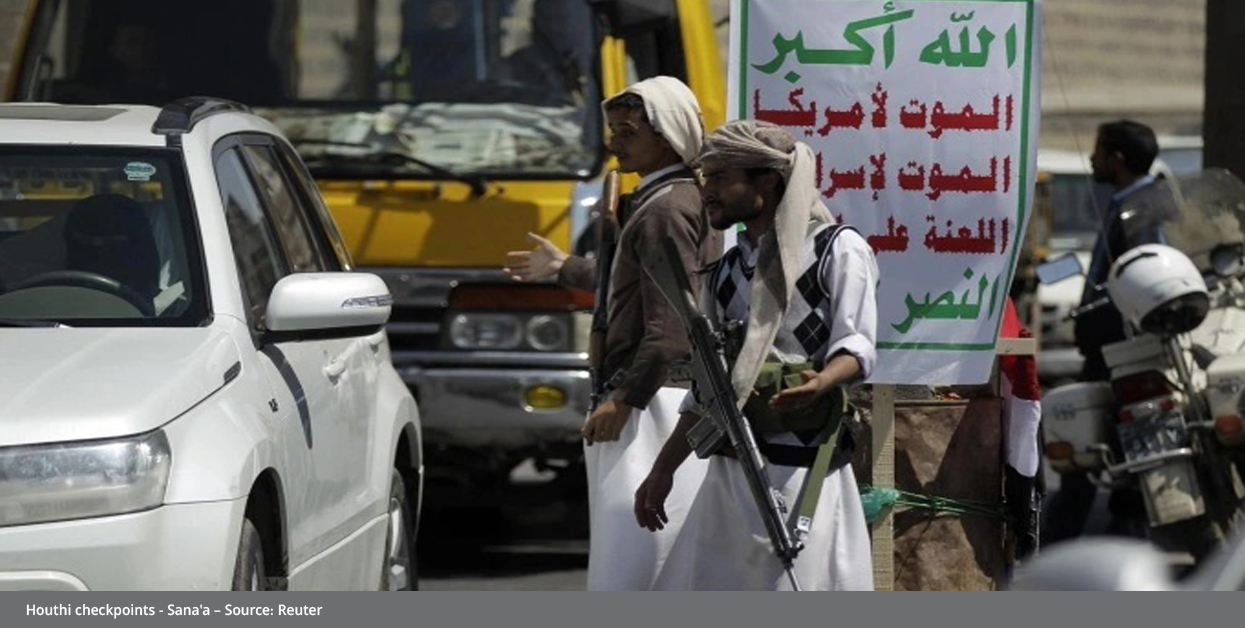
Political Shiism was available and possible through a wide network in various Arab and Muslim countries, these networks are active in many of these countries as mentioned above. Political Shiism has settled there, built its institutions and defined its goals and strategies in the context of the Iranian revolution, its goals and interests.
For example, Iran has supported, shortly after the 1979 revolution, many armed groups in Iraq since the 1980s and 1990s. Most of them started by being armed groups and developed over time to be engaged in the political action. Iran has also been providing support for Hamas and the Islamic Jihad in Palestine for more than three decades; Hamas financial support ranged from $ 20 million and $ 50 million per year from 1990 to 2000 [10].
Towards a strategy that opposes setting the Shiite school free from of the grip of Al-Wali Al-Faqih:
It may be difficult to talk about the liberalization of the Shiite school from the grip of Al-Wali Al-Faqih, under the control of the political Shiah, and the sectarian congestion in many countries in the region, and during the antagonistic period between the extremists of Sunnis and Shiites who are targeting everyone and calling for the war in the whole region.
It was necessary to tackle and pay attention to the political Shiism and the need to restore the Arab, national and moderate Shiism, which could be identified in the following initial lines:
First: The realization and management of diversity within the Shiite field, as it is within the Sunni field, and taking joint positions against extremists from both sides.
Second: Being aware of diversity and controversy between the Arab and Alawite Shiism on the one hand and the Iranian political and Safavid Shiism on the other, as different schools, in addition to avoiding recruiting them all for the favor of the Iranian margin.
Third: bridging the gap with regenerative and critical argument of Shiite extremism, since the time of Talaqani, Shreati and Mathari until the time of Surch, Sorosh and others who have dismissed the political employment of the community in the regime of Al-Wali Al-Faqih.
Fourth: Criminalizing and prohibiting hate tendencies and discourses that can be provocative to opposing sectarian components, and to the conscious and responsible management in the framework of the homeland among sectarian variations.
Fifth: Beginning from "the here and now" and from the tolerant legacy that crosses different religious communities toward reaching the Islamic origin and joint horizons that protect the homelands against ISIS attempts to explode them.
Sixth: Reconsidering the Renaissance question, which has focused on overcoming the situation and gap of our backwardness and others’ development since it was raised in the late nineteenth century, not only with Shakib Arslan and his famous book in 1939, and away from the history questions that have become a belief and disputed about the Imamate, the caliphate and strife.
[1] Imam Mohammad Mahdi Shams El Din (1936-2001), Commandments, p3
[2] The commandments of Imam Mohammed Mahdi Shams El Din, M X, p2
[3] See for example d. Mohamed Wajih Nazmi, Shiites of Iraq, and the issue of Arab nationalism, prior to independence, Arab Future Magazine issues 42, 43.44 years in 8, 9, 10, 1982, can be reviewed on this link, and also imam Mohammed Mahdi Shams al-Din (1936-2001), Commandments, p2
[4] From the book exporting the revolution, in in Khomeini's view, The International Foundation for Disseminating and organizing Al Khomeini’s Heritage, undated.
[5] Ruhollah Khomeini, the Islamic government, the network of thought, the third edition, (lessons he gave in Najaf from 13 Dhu al-Qadah to 1 Dhu al-Hijjah 1389 H- 1969 AD) and also: Haidar Al Haidar, Wilayat al-Faqih: Shura and Wilayat al Faqih, Islamic thought complex floor 2, floor 1 year 1409 H-1988 AD.
[6] See Mohammed Al-Sayyad, the Iranian regime position of references and opposing clerks, the Rasanah International Institute of International Studies, was published on September 12, 2017 on this link: https://rasanah-iis.org/?p=8960
[7] occurred on March 22, 1963, when security forces raided Feyziyeh School in Qom, where there were a number of influential players in the Iranian political opposition.
[8] Moussawi, the miserable revolution, previous source mentioned, p. 135 and 136.
[9] See a report entitled: Iranian support for Huthis .. Financing, training and smuggling of weapons, the site of the Al Marsd Post on December 13, 2019
[10] For more details, see a report entitled: How did Iran penetrate the political life of neighboring countries?, The center of Middle East Ashbar, date of publication 21 August 2020.
Keep in touch
In-depth analyses delivered weekly.
